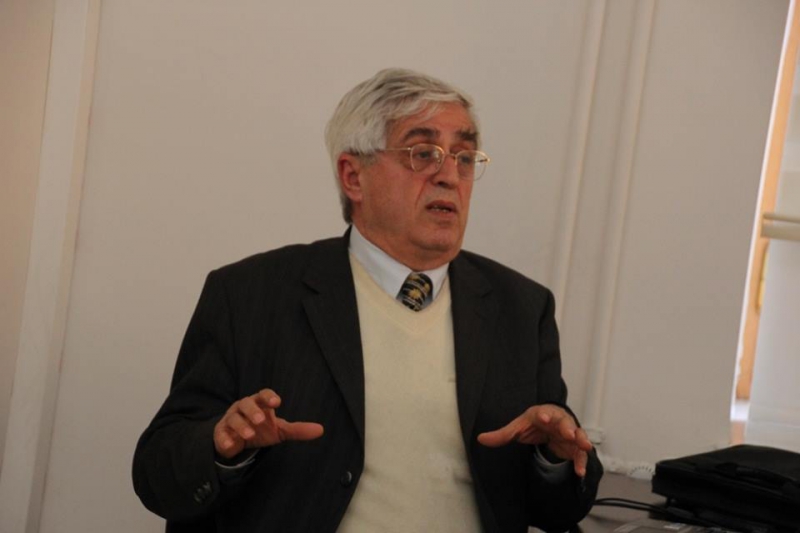As the Global Seismic Strengthening Center, we design and strengthen structures of all types and ages (historical, masonry, wood, reinforced concrete or steel).
We have strategic partnerships with the most respected companies in California in seismic design and seismic devices. As SGM, we follow the developments in the field of seismic strengthening in the world very closely; we apply only the most advanced methods and proven systems in our seismic designs. For these reasons, SGM, which was a construction contracting company in 1977, has become an expert company in Turkey in seismic strengthening over time.


Ali BAYRAKTAR Chairman of the Board of Directors Business partner Civil engineer with 40 years of experience Education: Civil Engineering – ITU 1972 Completed Works: Building, bridge, road, factory, warehouse, road, city drinking water He is one of Turkey's expert engineers in seismic design and seismic reinforcement applications. He currently holds a patent on seismic reinforcement and is about to finalize his work on 2 patent applications on seismic reinforcement. He has two published books, "Analytical Investigation of Historical Structures and Seismic Strengthening Methods" and "Development History of Masonry Structural Engineering-Earthquake Resistant Structural Designs".
is to make Turkey a country where our people live without fear of earthquakes and have structures they do not worry about being in.
To be the most respected and reliable seismic reinforcement company in Turkey, producing integrated solutions through engineering and construction services in seismic reinforcement by using the world's most advanced and reliable seismic reinforcement technologies and equipment in reinforced concrete and masonry structures and also by developing them within our own structure.
To protect human life by applying and developing the world's most advanced seismic reinforcement technologies against future earthquakes.
What is an Earthquake?
An earthquake is a natural event marked by abrupt and violent shaking of the ground, which is frequently triggered by the movement of tectonic plates beneath the Earth’s surface. These motions occur along faults, which are breaks in the Earth’s crust where plates have moved past one another. The energy released during it travels as seismic waves, causing significant damage to buildings, infrastructure, and landscapes and potential loss of life. They can vary widely in magnitude and severity, with consequences ranging from barely discernible vibrations to catastrophic disasters that transform entire regions.
What are the analysis and methods of strengthening historical building structures?
Analysing and strengthening historical structures are challenging task due to the geometrical complexity and lack of knowledge about the inner core material and due to the fact that the masonry material is not able to carry tensile stresses. A better understanding of both gravity load transfer mechanism and lateral resisting system of such structures is the key issue for a comprehensive structural analysis, interpretation of the analysis results and a proper intervention. Nowadays, with the development of computational methods, analyses of historical structures are mostly performed using Finite Element Analyses. Generating a finite element model of the structure require a good engineering experience to make a reasonable geometrical simplification of the complex geometry and a good assumption of unknown inner-core materials.
What are the engineering aspects of historical structures?
Historical structures typically are more massive than contemporary structures and the structural resistance depends on the geometry of the structure, shape of the structural components and the characteristic strength and stiffness of the material used. Generally, the old foundation systems that support the historical structures are different from the current practice in terms of materials used, foundation-structure connections and the functionality. Ancient building masters had introduced special techniques to make the structure withstand the lateral forces and to control the underground water level and humidity. The engineering concepts in modern structures are not the same as of historical structures such as moment resisting system, diaphragm etc. The analysis method, strengthening, and other characteristics of such monuments should be investigated with special techniques.
What features should be observed in the strengthening of historical monuments against earthquakes?
When seismic strengthening of historical masonry structures is carried out, first of all, the characteristics of the structure should be examined in great detail and the structure should be known very well. Then; the tensile stresses that occur in the structure during the earthquake and the areas where these tensile stresses occur should be determined in a computer environment. Finally; the tensile forces formed in the structure should be taken with high-tech tensile elements that will be integrated into the structure. It is certain that; the strengthening method to be selected; should completely preserve the architectural and historical features of the structure.

